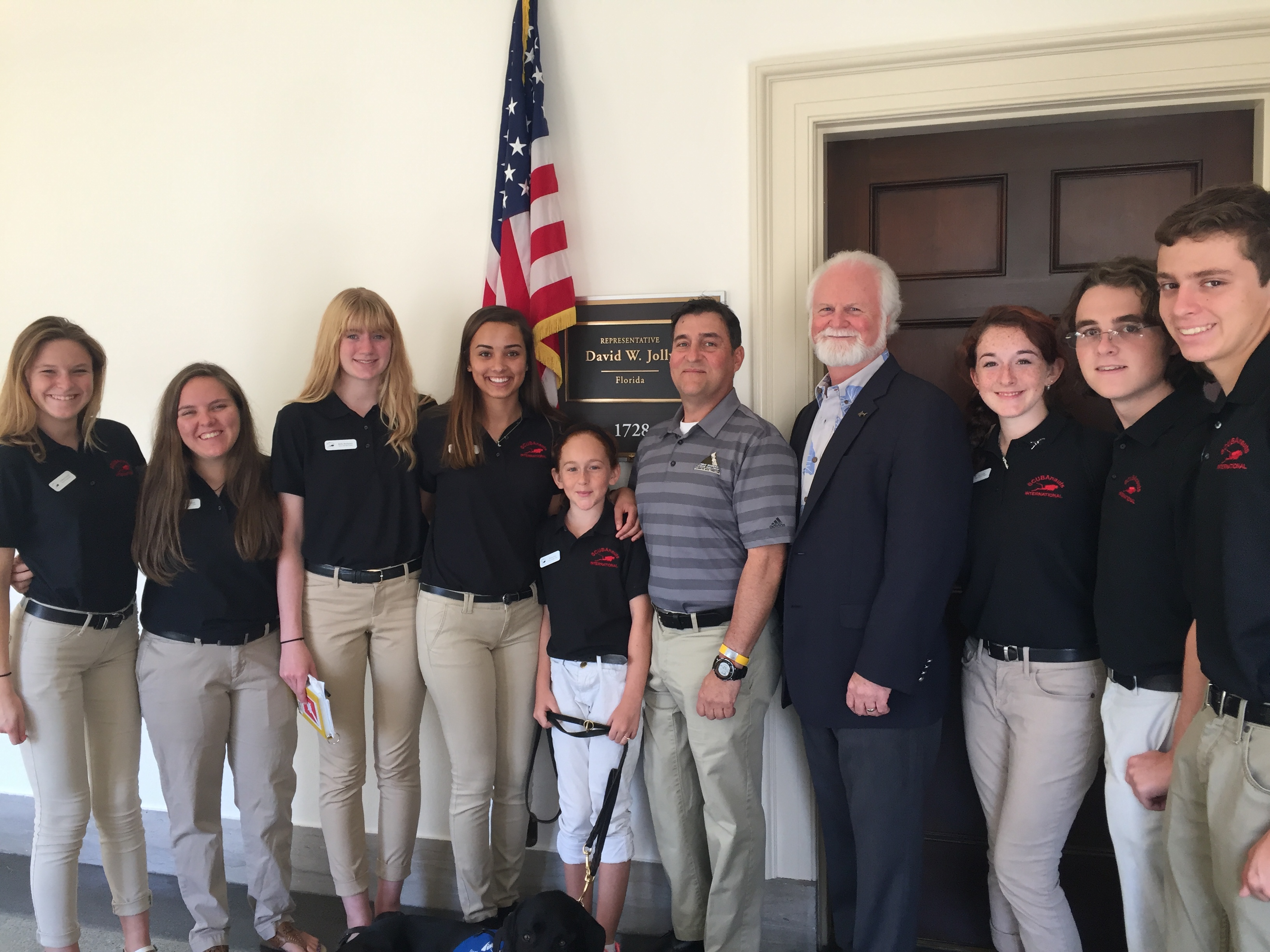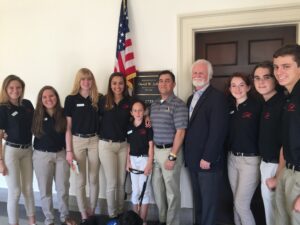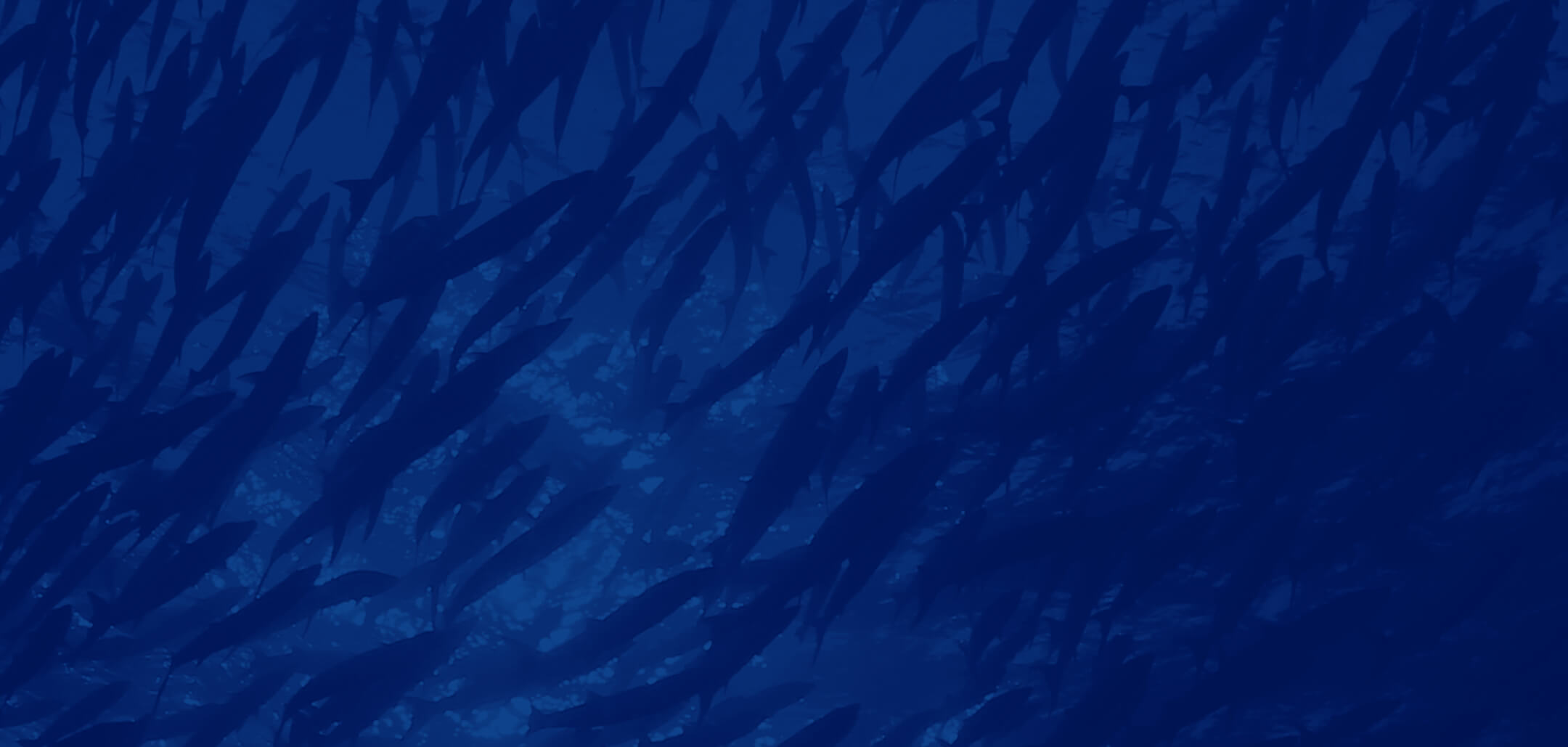Mote Marine Laboratory helped promote Florida’s eco-friendly seafood and shared its research and expertise with ocean-focused leaders during Capitol Hill Ocean Week (CHOW) from June 7-9 in Washington, D.C.
Each year, CHOW draws more than 600 national and international scientists, policymakers, leaders from marine industry and conservation to raise awareness of ocean issues and advance ocean policy and stewardship.
On Thursday, June 9, Mote Senior Scientist Dr. Kevan Main participated in an expert panel on aquaculture (seafood farming), one of the world’s fastest-growing food sources.
Aquaculture production tripled during the last 20 years, according to the United Nations Food and Agriculture Organization. U.S. scientists are advancing technology for environmentally sound aquaculture through facilities such as Mote Aquaculture Park in Sarasota County, Florida. There, Mote is developin the technology to raise marine fish in recirculating aquaculture systems that recycle 100 percent of their saltwater, including a prototype aquaponics greenhouse that couples marine fish with salt-tolerant vegetables. Despite the success of domestic innovators, U.S. commercial aquaculture production lags far behind that of many nations, especially in Asia.
Thursday’s panel was moderated by Scott Nichols, Founder of Food’s Future, and it featured Main — who directs Mote Aquaculture Park and is Past President of the World Aquaculture Society — along with Alan Cook of Icicle Seafoods, Inc., Harlon H. Pearce of the Gulf Seafood Institute and Harlon’s LA Fish, and Lisa Tucker from the Seafood Watch Aquaculture Program of Monterey Bay Aquarium.
Discussion topics included:
- Seafood is critical for health of U.S. residents, but demand exceeds domestic supply.
Moderator Nichols noted that seafood is critical to the health of U.S. citizens, who don’t all eat enough to meet dietary guidelines. Citing a 2006 Harvard research paper, Nichols said, “If we all, in the United States, were to eat two helpings a week of an oily fish, that would lower the overall death rate in the country by 17 percent. It would lower the death rate due to cardiovascular diseases by 37 percent. This is an astounding finding. It’s bigger than quitting smoking; it’s bigger than wearing seatbelts. Our current consumption, however, is about half of what is recommended.”Even now, the U.S. does not produce enough seafood on its own to meet current demand. Nichols said all the fish caught and farm-raised in the U.S. can only meet about 40 percent of its existing demand, and many of the planet’s wild fisheries are either overfished or at their limit. Aquaculture must continue growing to feed the U.S. population. - Aquaculture is changing quickly, with more sustainable options becoming available.
While much of the world’s aquaculture still uses traditional ponds and nearshore cages, the past 20 years have brought advances in land-based recirculating systems that filter and re-use water, along with new types of offshore systems. Each can play their part to enhance efficiency and sustainability.“Integrated aquaculture is being developed for land-based and ocean based systems here and around the world,” Main said. “The focus is on how to use the nutrients (from fish waste) to produce multiple products. In land based systems you can use nutrients in the water to produce plants and use (solid waste products) to produce urchins, shrimp or other organisms. In the ocean they’re placing cage systems next to mussel farms and seaweed farms, so you’re producing three products where you were originally producing one.” - Challenges remain for sustainable business. U.S. businesses that seek to sustainably farm seafood struggle to obtain government permits due to complex laws and regulatory processes, which panelists said should be streamlined. Conversely, imported seafood sometimes comes from places with less stringent regulations and greater environmental impacts. Some panelists suggested engaging more with international aquaculture producers and processors to lessen environmental impacts of the seafood imported to the U.S.
- Markets must be enhanced for growing areas of U.S. aquaculture. Panelists discussed the need to enhance strategic marketing of U.S. aquaculture products. This need grows as new production opportunities open up. For instance, in January 2016, the National Oceanic and Atmospheric Administration (NOAA) announced the publication of a groundbreaking rule implementing the Fishery Management Plan for Aquaculture in Federal Waters of the Gulf of Mexico. The rule is a major step forward because it allows for large-scale fish farming in offshore, federal waters of the Gulf — beyond state waters where U.S. aquaculture has historically remained.
- Sustainable land-based technologies can support offshore aquaculture.
- With aquaculture in the Gulf of Mexico expanding offshore, there is a greater need than ever for sustainable technologies on land to produce healthy, young fish for the new offshore systems. Studying how to do that is a specialty of Mote Aquaculture Park.“We’re not going to do fish reproduction and larval production in the oceans; you need land-based systems, and you need recirculating technologies to keep those sustainable,” Main said. “We need these systems to use their nutrients from fish waste to produce other products, such as vegetables, and to produce each product separately, in series, so we can meet the regulatory requirements for each one independently.”
- The need for domesticated fish stocks.
Few fish stocks have been domesticated — selectively cultivated over generations to provide quality, reliable sources of protein through aquaculture. Salmon is one example. Some panelists highlighted the need for more attention and resources to support this goal.
During CHOW on June 8, NOAA held its 41st Annual NOAA Fish Fry in Washington, D.C. The Fish Fry showcases sustainable seafood by bringing together many CHOW attendees, members of Congress, leaders of ocean-related government agencies and national to international nonprofit organizations with chefs and seafood producers from across the country. At the Fish Fry, Mote partnered with Healthy Earth to highlight sustainably produced sturgeon and caviar from the Healthy Earth operation at Mote Aquaculture Park. Healthy Earth is a brand of Southeast Venture Holdings (Seven Holdings), LLC, which purchased the license to Mote’s sturgeon farming operation in 2014. In addition the Chiles Restaurant Group provided bottarga — specially prepared mullet roe that is a rising star of Florida’s seafood scene. Ed Chiles, owner of the Chiles group, is a partner in Healthy Earth, which purchased the Anna Maria Fish Company that was founded by Seth Cripe and Chiles and is the first and only U.S. company processing Southwest Florida’s grey striped mullet roe in an effort to create and retain the economic value of a local heritage resource. Partnership efforts of the Chiles group, Healthy Earth and Mote provide an opportunity to expand this value-added economic model to promote and develop other local marine resources in a sustainable manner.


Mote President & CEO (dark blue jacket) and retired U.S. Coast Guard Avionics Chief David Caras, a member of Combat Wounded Veteran Challenge, spend time with members of SCUBAnauts International on June 7 during Capitol Hill Oceans Week in Washington, D.C. Credit: Mote Marine Laboratory.
Also during CHOW, Mote leaders highlighted another major part of the Lab’s mission: restoring coral reefs. Mote President & CEO Dr. Michael P. Crosby joined Members of the Combat Wounded Veteran Challenge and young divers from SCUBAnauts International to update members of Congress about their annual partnership efforts to restore degraded reefs in the Florida Keys and Mote’s efforts to address invasive lionfish as part of the upcoming Sarasota Lionfish Derby.
Each summer, combat wounded veterans and SCUBAnauts work with Mote to outplant corals grown in the Lab’s underwater coral nursery. During their fourth annual mission in July 2015, more than 50 divers planted some 250 fragments of staghorn coral in Mote’s special restoration site near Looe Key.
“Our coral restoration missions together have been incredibly successful,” said Dr. Michael P. Crosby, President & CEO of Mote. “The SCUBAnauts and veterans each bring incredible energy and willingness to help, and we at Mote have the opportunity to share our science and restoration mission with two groups of dedicated people of different generations. Their participation helps to nurture the enthusiasm and passion for innovative research of our own Mote scientists, who work year ‘round to understand and address the toughest challenges facing coral reefs.”


